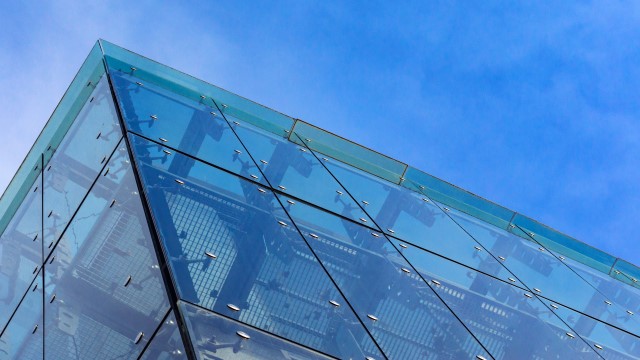Reflective Coated Glass

When Indium Tin Oxide is applied to glass, it creates a conductive and transparent surface that allows visible light to pass through, whilst also reflecting ultraviolet rays.
What is Indium Tin Oxide and How Does it Give Glass Reflective Properties?
Many everyday items utilise the unique properties of Indium Tin Oxide Coatings (ITO), from touch screen phones to aircraft windshields, yet, most people have never heard of it.
Indium Tin Oxide is used to make transparent conductive coatings. It is one of the most universally used transparent conducting oxide coatings because of its electrical conductivity properties and optical transparency.
Diamond Coatings Indium Tin Oxide Coating is applied to glass which allows it to reflect heat radiation but transmit light like normal glass. The properties of indium tin oxide coated glass make it the most popular choice of material for environmentally friendly construction and low emissivity (Low-E) windows. Moreover, the ability to regulate temperature in a room can be beneficial for scientific research labs.
Use on Low Emissivity Windows
Similar to the properties of double-glazing, the use of ITO coatings on glass windows results in a reduction of heat loss and gain. Throughout the year, heat generated within a building will be preserved by the coated glass’ reflective ability, allowing the heat to remain in the building. The result is reduced heating costs in the winter for buildings using low-e windows.
Similarly, In the summer, the heat from the sun is reflected by the ITO coated glass, keeping the building cool, cutting down on costs of running air conditioning, and helping reduce environmental impact.
Uses of Reflective Glass
Due to the low surface electrical resistances available, many of Diamond Coatings ITO coatings are an ideal solution for the construction of EM protection windows that have to transmit visible light while shielding electromagnetic radio waves.
Typical applications of ITO coated substrates include:
- Electrochromic and electroluminescent displays
- Energy conserving windows
- Field emission displays
- Gas sensors
- Heat reflective coatings
- LCD displays
- Photovoltaics
- Plasma displays
- Touch panels/screens and more
- Aircraft windshields
Benefits of Reflective Glass:
ITO was specifically designed to meet complicated and specific requirements. These coatings provide significant benefits to specific conditions that make them the perfect solution to the demands and applications of both industry and research.
The main benefits of Diamond Coatings’ Diamox ITO coatings are their high:
- Optical Transparency – At wavelengths from 525nm to 600nm, 20 ohms/sq. coatings have typical light transmission rates (peak) of 81% on polycarbonates and 87% on glass substrates.
- Electrical conductivity – Sheet resistances start from as little as 2.5 Ohms/sq. (although it should be noted that sheet resistances <10 ohms/sq. can be produced only on glass substrates)
- Shielding Effectiveness – At 1GHz and 1MHz, ITO coatings offer respective shielding effectiveness rates of 26dB and 58dB. Consequently inhibiting, minimising and potentially eliminating ESD, RFI and EMI effects, this serves to improve both the overall performance and reception of electronic devices.
- Hardwearing Durability – Offering good chemical stability and resistance to cracking, crazing and delaminating; flaking, peeling and water (moisture) penetration, ITO coatings show neither evidence of optical degradation nor of reductions in sheet resistances or coating adhesion when tested to MIL STD 48497 (i.e. exposure to salt spray and humidity/thermal cycling).
Limitations:
Oxide-coatings are not recommended for prolonged exposure to temperatures greater than 300°F, or 150°C in oxygen or air atmospheres, which may result in undesired changes in resistivity.
Follow this link to learn more about our DIAMOX Indium tin oxide coatings and view our datasheets.
More detailed information on our ITO glass options can be obtained by emailing us at: enquiries@diamondcoatings.com.